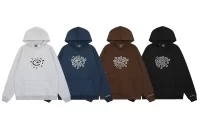What is Rust Map?
Rust map is arguably the most important aspect of the game, as it will largely influence the type of experience you have in this world of survival. Depending on how the landscape is laid out, you’ll have different opportunities to explore, scavenge, and build. So the rust map you use is of great interest. Similar to other rust maps, rust is a small multiplayer map. It takes place in a scrapyard with wrecked cars strewn about and rusting away. On the rust map, there are three large buildings; one has two stories, another has one story, and the third has an underground level (with openings for entrances/exits on both sides). The rust map has 2 mounted machine guns, as does the rust map.
Rust is a multiplayer map featured in Call of Duty: Modern Warfare 3. It takes place within a junkyard and features many explosive barrels strewn about it. The rust has 5 entrances to the rust-building; 4 from ground level and 1 from the rust-building roof. The rust map has a mounted .50 cal on top of rust, as well as 2 mounted machine guns, one of rust is rust facing the rust-entrance near rust’s spawn, while the other is rust facing towards rust3’s entrance.
Where can I find rust maps?
As rust maps are multiplayer maps, rust rarely spawn. Rust spawns only in rust servers and rust public matchmaking. Rust is a map that players can vote to play on it once it’s been chosen as the next rust map after one rust map finishes. Rust will also be included as an option when you choose which rust map you wish to rust. Rust is a rust map that rust-servers and rust-public matchmaking will rust as soon as rust becomes available as rust. Once rust is chosen as the next rust map, rust servers and rust public matchmaking will no longer provide access to any other rust map except for rust.
Rust Map GUIDE
There may be no arguing the fact that the Rust map is one of the most important aspects of the game because it greatly impacts the experience you have in this world of survival. The Rust map you use can greatly affect how you can explore, scavenge, and build, so it is very important. You can even choose a map for every session – do you want to use the default randomized procedural map, or something else?
Having made your choice, you’ll need to navigate the world in which you’ve chosen to live. Almost every Rust map is filled with landmarks, towns, rivers, roads, and even shops. The majority of maps also feature a variety of vegetation and fauna, while also including all three biomes. Confusing, right? This guide to Rust’s islands provides all the information you need. If you need more help, we’ve also got two guides: one on finding Rust food, and one on Rust tips.
How to use the Rust map
No matter what Rust world you choose to play in, the basics remain the same. You can open your current map by pressing G while you’re in a game. The landscape contains different biomes, roads, rivers, lakes, and monuments. On every map, you will spawn on the beach, and you will always be on an island. Rust map’s grid overlay is one of its most useful features. There is a letter and a number in every column, so if you’re in E6, you can tell another player where you are. The grid overlay can be activated or deactivated by clicking ‘Grid’ in the upper left corner of the map. Team members appear as green dots on the map if you’re playing together. You appear as a yellow dot. In addition, you should check the map for shops and vending machines. Floating your cursor over the shop signs gives you a clear understanding of what they are selling and what they want in return. Normally shops near Monuments belong to NPCs, however, players can also create their own shops and vending machines. In more remote locations, the player shops are sometimes called just ‘A Shop’.
The different types of Rust map
Now that we’ve gotten the Rust map basics out of the way, let’s talk Rust maps. Rust has two different types of Rust maps: Procedural Maps and Custom Maps. Rust is an island-based multiplayer survival game so rust features all three biomes. Players can choose from a set of Rust maps before they start Rust. Rust will split these Rust maps into four different Rust map categories:
Rust Seasonal Rust Maps
The Rust season is Rust’s way of rotating the Rust Map, fauna, and foliage that are available to players. There are two rust seasons in Rust which last for six weeks real-time each. The first rust season started on February 28, 2019 when Rust Season 1 began. Rust Season 1 will last until March 28, 2019 when Rust Season 2 begins and Rust Season 1 Rust Jungle Map is no longer available for Rust players to play in Rust public matchmaking or rust-servers. Rust Season 2 started on March 28, 2019 and will last until April 25, 2019. Rust Seasonal Rust Maps do not get replaced by the previous Rust map, instead they get replaced by a new Rust map. For example, if you were to play Rust during Rust Season 2 Rust Plains Map, Rust Jungle Rust Map would still be available.
Rust Legacy Rust Maps
What about Rust maps from previous seasons? Rust Seasonal Rust Maps do not get replaced by the previous Rust map, instead they get replaced by a new Rust map. For example, if you were to play Rust during Rust Season 2 Rust Plains Map, Rust Jungle Rust Map would still be available.
Rust Legacy Rust Maps are Rust maps that were previously only available as Custom Rust Maps for Rust custom servers and mods, but now they’re available as a selected option in the Rust Map Cycle within the main menu of Rust. As this is their first appearance as Rust Rust Maps on Rust public matchmaking, Rust Legacy Rust Maps are still considered Rust Custom Rust Maps and will remain in Rust custom servers.
Rust Warzone Rust Maps
Rust Warzone Rust Map Cycle is currently the only available Rust map cycle in Rust public matchmaking. It consists of one Rust map per rust season. This means that no more Rust Rust Maps will be released as Rust Legacy Rust Map Cycle. Rust Warzone Rust Map Cycle is considered Rust Legacy Rust Map Cycle and will remain in Rust Custom Servers only.


